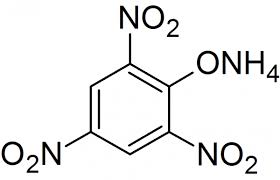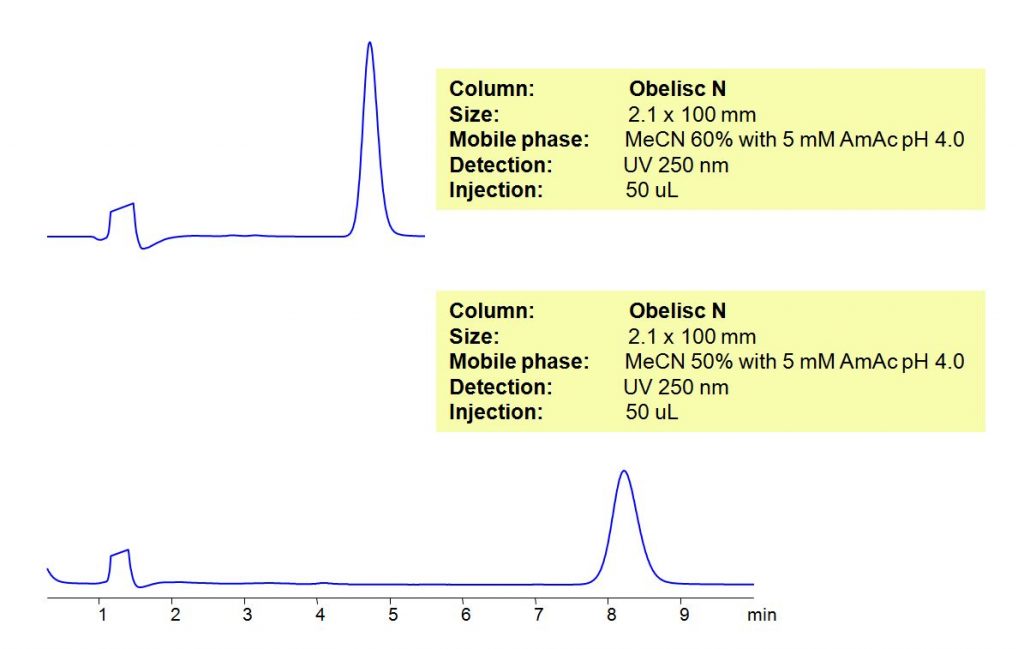| CAS Number | 131-74-8 |
|---|---|
| Molecular Formula | NH4C6H2N3O7 or C6H6N4O7 |
| Molecular Weight | 246.13 |
| InChI Key | PADMMUFPGNGRGI-UHFFFAOYSA-N |
| Synonyms |
|
Applications:
HPLC Method for Analysis of Ammonium Picrate on Obelisc N Column
July 11, 2017
| Column | Obelisc N, 2.1×100 mm, 5 µm, 100A |
| Mobile Phase | MeCN/H2O – 50/50% |
| Buffer | AmAc pH 4.0- 5 mM |
| Flow Rate | 1.0 ml/min |
| Detection | UV, 250 nm |
| Class of Compounds |
Explosive, Hydrophobic, Ionizable, Base |
| Analyzing Compounds | Ammonium Picrate |
Application Column
Obelisc N
SIELC has developed the Obelisc™ columns, which are mixed-mode and utilize Liquid Separation Cell technology (LiSC™). These cost-effective columns are the first of their kind to be commercially available and can replace multiple HPLC columns, including reversed-phase (RP), AQ-type reversed-phase, polar-embedded group RP columns, normal-phase, cation-exchange, anion-exchange, ion-exclusion, and HILIC (Hydrophilic Interaction Liquid Chromatography) columns. By controlling just three orthogonal method parameters - buffer concentration, buffer pH, and organic modifier concentration - users can adjust the column properties with pinpoint precision to separate complex mixtures.
Select options



